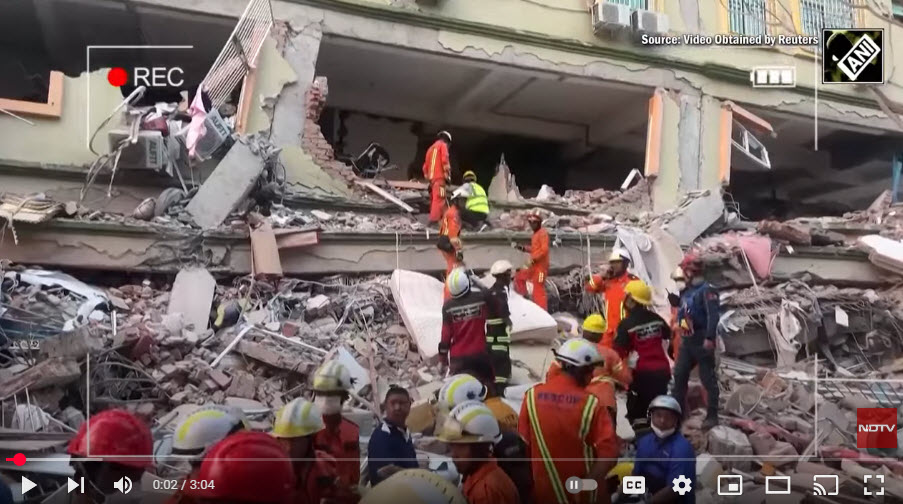In the aftermath of a devastating 7.7 magnitude earthquake that strikes central Myanmar on March 28, 2025, the death toll rises to over 2,700, with more than 4,500 individuals injured and hundreds still missing. The quake’s epicenter is near Mandalay, causing widespread destruction across multiple regions and affecting neighboring countries, including Thailand, where significant structural damage is reported, including the total collapse of a skyscraper hundreds of miles away.
Rescue operations continue as local and international teams work tirelessly to locate survivors amidst the rubble. In a remarkable instance, a 63-year-old woman is rescued after being trapped for 91 hours under a collapsed building in Naypyidaw. Despite such successes, the window for finding additional survivors narrows, and the focus gradually shifts toward providing aid to the displaced and injured.
The earthquake compounds existing humanitarian challenges in Myanmar, a nation already grappling with internal conflict. Reports indicate that the military junta is obstructing aid deliveries to certain areas, particularly those controlled by opposition forces, exacerbating the crisis for affected populations. Allegations have emerged that aid is being confiscated or redirected, prompting international condemnation and calls for unimpeded access to all impacted regions.
Survivors face dire conditions, with shortages of food, clean water, and medical supplies. The destruction of infrastructure hinders relief efforts, leaving many communities isolated. In Sagaing and Mandalay, some of the hardest-hit areas, residents remain without electricity and shelter, heightening the urgency for coordinated humanitarian assistance.
The international community responds with offers of aid and support. USAID dispatches a three-person disaster assistance team to help coordinate efforts. However, logistical challenges and political barriers impede the swift delivery of assistance. Health organizations warn of potential outbreaks of disease due to unsanitary conditions and the lack of medical care, underscoring the need for immediate intervention.
As Myanmar observes moments of silence to honor the victims, the nation confronts the monumental task of recovery and rebuilding. The resilience of its people is evident, but the path forward requires substantial support, both domestically and internationally, to address the multifaceted challenges posed by this disaster.
Sources:
https://apnews.com/article/myanmar-thailand-earthquake-c4ccdcd3ff2e38c54046274ee039cbf7
https://www.theguardian.com/world/2025/apr/01/myanmar-earthquake-junta-accused-blocking-aid
https://www.thetimes.co.uk/article/survivor-found-myanmar-earthquake-25z083bw7
https://www.aljazeera.com/news/2025/4/1/myanmar-holds-minute-of-silence-as-death-toll-from-earthquake-tops-2700
https://www.nature.com/articles/d41586-025-00997-1
https://www.youtube.com/watch?v=yzUU3ww6OPM
https://www.youtube.com/watch?v=-XMeZAU9rww
https://www.youtube.com/watch?v=uv_SfCwcSgw



